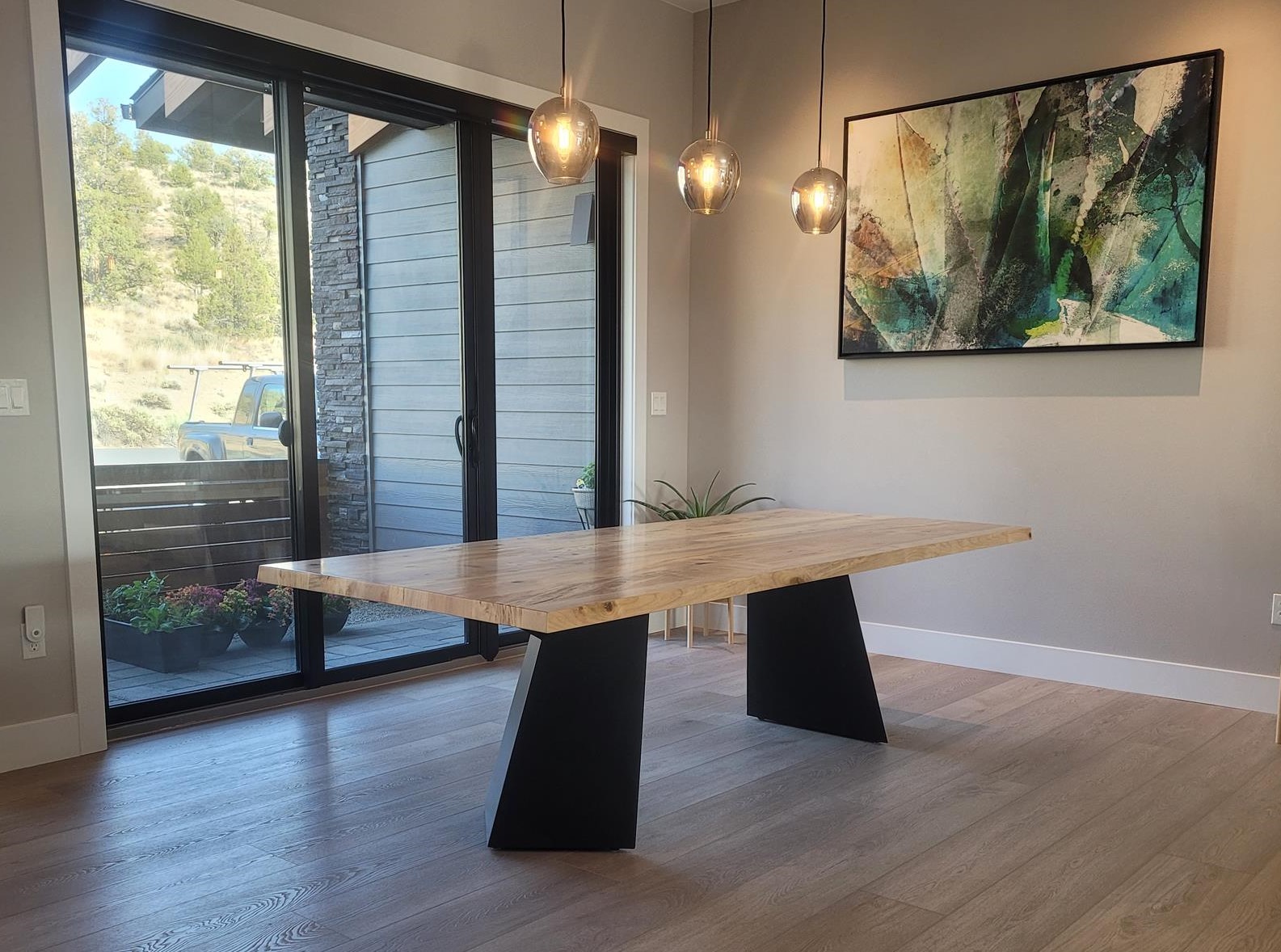Dining Room Table Legs: What to Think about Before You Purchase
Dining Room Table Legs: What to Think about Before You Purchase
Blog Article
Table Legs: Just How to Select the Ideal Designs for Your Space
Picking the ideal dining table legs is vital for both aesthetic and useful harmony in your eating space. Whether your space boasts a smooth, modern-day vibe or leans in the direction of a more standard ambiance, the design of the legs can substantially influence the overall appearance. Conical legs exude contemporary style, while turned legs use a nod to classic appeal.
Analyzing Your Dining Space Style
Exactly how do you establish the ideal eating table legs for your room? The solution starts with a detailed analysis of your eating area design. A natural style makes sure that your table legs improve the general aesthetic rather than clash with existing elements.
Following, take into consideration the existing furnishings and decoration. The products, colors, and textures within the room play a critical duty. A dining area with streamlined, contemporary chairs and metallic accents might profit from easy, streamlined table legs. Conversely, a space filled up with vintage pieces and rich textiles may ask for luxuriant, sculpted legs.
Lights additionally influences understanding. All-natural light can highlight specific materials and coatings, while man-made lighting can highlight different aspects. Account for the area's scale and percentages. Huge, open eating rooms can suit larger, extra substantial legs, whereas smaller sized spaces call for more fragile, unobtrusive designs. By thoroughly evaluating these variables, you can pick dining table legs that harmoniously mix with your dining area's style.
Popular Leg Styles Clarified

One widespread design is the conical leg, renowned for its streamlined, modern appearance. Next, the turned leg attributes complex spindle-like styles, frequently located in standard and farmhouse settings.
Cabriole legs, with their distinctive curves, are synonymous with French Provincial and Queen Anne furnishings. Their elegant, streaming lines bring a feeling of class and historical charm (dining room table legs). For those favoring a robust and uncomplicated style, square legs provide tough support and a clean, geometric appearance, perfect for commercial or minimalist rooms
Finally, hairpin legs use a retro, mid-century modern ambiance. Made from metal, these legs are both light-weight and strong, including an one-of-a-kind aesthetic comparison to wood tabletops. Understanding these designs will lead you in selecting eating table legs that enhance your room's aesthetic and capability.
Material Factors To Consider

Timber is a traditional option, known for its warmth and flexibility. It is available in numerous varieties such as oak, walnut, and maple, each offering one-of-a-kind grain patterns and shades. Steel legs, usually made from stainless-steel, iron, or light weight aluminum, give a modern-day and commercial appearance while making certain durable assistance. They are normally a lot more immune to deterioration, making them a resilient option.

Various other materials like bamboo or rattan use environmentally friendly choices, bringing an all-natural and unwinded ambiance to the eating location. Each material has its pros and disadvantages, and the ideal choice will rely on your specific requirements and choices.
Balancing Looks and Functionality
Achieving the ideal equilibrium in between aesthetics and functionality is important when picking eating table legs. While the visual appeal of table legs can substantially boost the total ambiance of a dining space, their practical elements can not be forgotten. The style of the legs must harmonize with the space's decoration, yet they must additionally give adequate support and stability for the table.
Consider the architectural design of your space. Smooth, contemporary interiors may benefit from minimalist, metal legs that provide a clean and unobtrusive look. On the other hand, conventional settings frequently complement turned or carved wooden legs that include a touch of style and sophistication.
Functionality incorporates the security and longevity of the legs. Trestle legs, recognized for this their effectiveness, can supply solid support for larger tables, making them ideal for households or regular entertainers. Alternatively, pedestal legs can supply even more legroom and adaptability, enabling much better seating setups
In addition, the height and positioning of the legs are essential for comfortable eating. Legs put too much internal might hamper seats, while those also close to the edge can limit motion. Thus, thoughtful factor to consider of both visual and functional components is vital for an ideal eating experience.
Personalization and DIY Options
Modification opens a world of opportunities for creating eating table legs that are distinctly tailored to your preference and demands. Specific layout elements, such as turned legs, tapered shapes, or complex carvings, can be integrated to reflect your style.
For those inclined towards diy (DO IT YOURSELF) tasks, creating customized table legs uses both a rewarding experience and the chance to attain a bespoke visual. Do it yourself fanatics can source basic materials and make use of woodworking or metalworking tools to craft legs Click This Link that meet accurate requirements. In addition, numerous online tutorials and workshops offer support, making the procedure extra accessible for beginners.
Ultimately, whether selecting professional customization or beginning on a DIY venture, the capability to tailor table legs guarantees that the resource final product balances with your interior style vision, enhancing both functionality and visual allure.
Verdict
Choosing the appropriate dining table legs needs cautious factor to consider of the general design of the dining-room, including existing building features and furnishings. Recognizing prominent leg styles and product options is important for accomplishing an unified visual. Stabilizing looks with performance makes certain stability and boosts the eating experience. Personalization choices additionally permit a tailored design. Inevitably, the picked table legs must complement the decoration, supplying both aesthetic allure and useful support.
Report this page